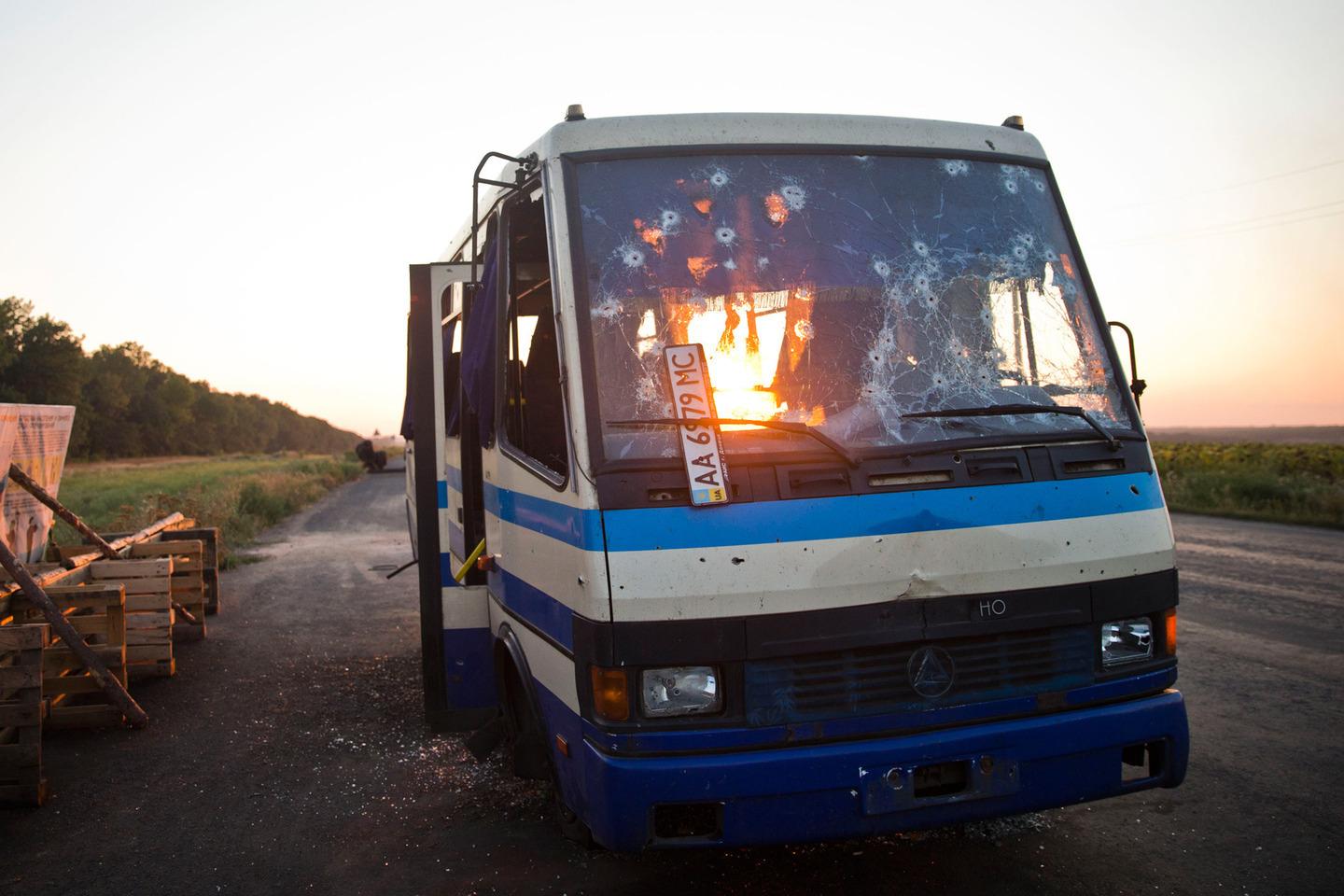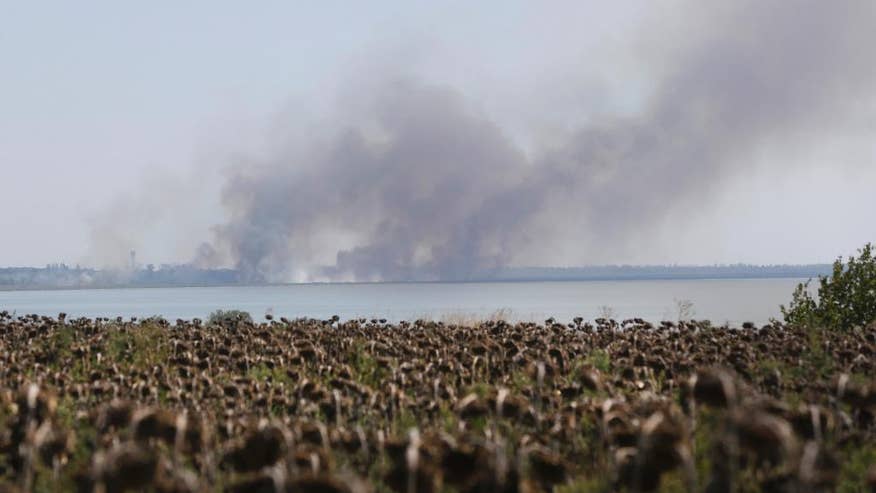 |
| Russian troops in Crimea |
Things have moved very fast in Crimea. Following the results of a widely condemned referendum in the Crimea where results showed that over 97% of voters chose to secede from Ukraine and instead join the Russian Federation. While the results were almost immediately disavowed by a large majority of the international community, claiming that the referendum was conducted under intimidation and suppression by both Russian troops and the Crimean (as well as those from other nations) militias loyal to them, that did little to stop Russia from recognizing it. Since then, Russia has solidified its de facto control of the region, with Ukraine withdrawing its 25,000 troops from the peninsula in an implicit sign that Kyiv recognizes its rather limited ability to assert control over the breakaway region. The very next day, Russia’s lower house voted in favour of formally annexing it. With Crimea in the Russian camp for the long term at the very least, what implications does it have for the rest of the former Soviet sphere?
Putin’s obsession with empire building is well documented. Reasserting control over the former Soviet sphere has been an increasingly prominent policy goal of the Kremlin over the past decade. But any doubts that remained should have been dispelled by Putin’s March 18th address to Parliament. Denouncing what he deemed a centuries-long conspiracy by Western powers to suppress Russia, Putin heralded the dawn of a new era of Russian dominance, which was later christened by the Duma the very next day, who voted in favour of annexing the Crimean peninsula. With its new doctrine of intervention on behalf of ethnic Russians that worked so successfully in the Ukrainian crisis, where will Putin go next? Many point to Transnistria, a heavily industrialized breakaway region of the ethnic hodgepodge that is Moldova. In response to the Duma vote to annex Crimea, the Transnistrian Parliament in turn passed a motion to join the Russian Federation. Some speculate that Russia may turn to Estonia and Latvia, both countries with substantial Russian populations in hopes of bringing them into its orbit or at the very least carving out Russian exclaves within them. Regardless of whatever move the Kremlin does make, it’s fairly certain they will not stop with the Crimea. Despite drawing strong condemnation from the international community and potentially alienating UN ally China, the biggest provocation in recent memory drew little in the way of firm consequences for Russia, and damaging sanctions do not seem likely any time soon. Europe is heavily reliant upon Russia for energy, and that will not change anytime soon especially as many European countries move away from nuclear energy. Russian-American trade is so diminutive that sanctions would have a rather limited impact.
So how do the events of recent weeks affect Moscow’s geopolitical ambitions? The Russian dominated antithesis to the EU, the Eurasian Union, is set to become reality on New Year’s Day next year, with membership currently consisting of Belarus, Russia and Kazakhstan, with Armenia, Kyrgyzstan and Tajikistan all potentially joining as well. While Russia’s annexation of Crimea provides it with the framework to take over other so-called “frozen” conflict zones, it also runs the risk of alienating other former Soviet states who may have been eyeing the union with wary interest. While some states such as Poland and Lithuania voiced their desire to remain outside of any sphere of Russian influence by forging closer ties to NATO and the EU, countries such as Moldova and Armenia that could be compelled to join may look elsewhere, as evidenced by the rather lukewarm statements they issued in response to the annexation vote. Russia’s newfound aggression is not the spontaneous combustion of a cocktail of nationalistic fervour at home and instability abroad but rather the culmination of a decade’s worth of meticulous planning. Putin orchestrated various factors to create “the perfect storm” that would enable him to push his foreign policy agenda of restoring Russian domination in the region. Harnessing the influence that the Russian Orthodox Church wielded over the population in order to stoke nationalistic sentiments, rebuilding the Russian military as an effective fighting machine with a global reach, and influencing the affairs of other states in the post-Soviet sphere were all elements which enabled what unfolded on the peninsula to happen. Putin took a calculated risk by invading Crimea, as its capture was an easy sell to the international community due to its traditional history as part of Russia as well as a litmus test of western appetites for Russian provocations. It could not have hoped for a better result, and now count on the consolidation of Russian interests in the region to accelerate.
The picture does look particularly bleak, but what should the west do? Sanctions may not be as effective as they have been in Iran (until recently), but the U.S and its allies do have a unique asset in NATO. While it has seen a decade of general neglect, the 28-member military alliance is maybe the one tool in the U.S’s arsenal that Putin does fear. When Poland, Latvia and the Czech Republic joined in 1999, Russia was wary of what it perceived to be creeping western influence beginning to encroach upon its own sphere of influence. The U.S has dispatched naval forces to the Black Sea and a few days ago along with France announced it was sending sending air assets to Poland. John McCain has stated that he wanted to see military equipment sent to Ukraine, and with leaders of former eastern bloc states becoming increasingly nervous about Russian activities, such a move would be easily defensible. In fact, it might be prudent as ten day old Russian military exercises have led to a military buildup that NATO’s top commander described as “very, very sizable and very, very ready." While it is desirable to avoid a “hot war”, it should not be avoided at all costs, lest the dovish policies of blind appeasement that failed spectacularly in the 1930s make a return. While the situations are in no way parallels, there are some disturbing similarities that offer insight into how a potential conflict could be avoided.
While on paper NATO countries (excluding the U.S and Canada) spent $269.736 billion on military expenditures and account for a significant chunk of global military spending, this is set to change with cuts to the militaries of most members. The United States accounts for 70% NATO spending, and with some European members cutting spending up to 40%, it isn’t exactly unusual to hear some of the more fiscally conservative members of Congress complaining about how their European allies have been shoving the burden of defending them increasingly on the United States. In the meantime, Putin has gone ahead with a vast and sweeping modernization program for the military that is estimated to cost somewhere in the neighbourhood of $770 billion dollars and will oversee the expansion of the air force, navy, special forces and intelligence capabilities. While there has been some criticism about the realisticness of such an ambitious plan, such as the effect of corruption that is almost synonymous with massive projects in Russia, it nevertheless demonstrates the sincerity of Putin’s pledge to pursue a more aggressive foreign policy. Hearkening back to 80 years ago, one of the biggest draws of the upstart Nazi Party was its goal of restoring Germany to its former stature as a world power. While illegal rearmament had begun from almost the moment that the Treaty of Versailles was signed, it was ramped up in the 30s under the direction of Hjalmar Schacht (notably never a member of the Nazi Party and later jailed at Dachau), the Reich Minister of Economics at the time. Schacht successfully managed to create dummy companies that shielded rearmament efforts from prying Allied eyes. From a force that was limited to a 100,000 ground army with no tanks, no air force and a navy of just 6 ships with no submarines, it was transformed in short order into a well oiled military machine that 20 years later would roll across Europe in a deadly “lightning war”, or Blitzkrieg.
Now there are some stark differences in these situations (namely the Treaty of Versailles), but remaining oblivious to the military buildup occurring to the east is not a plausible or realistic plan of action for European countries seeking to avoid conflict. While placing boots on the ground would be an obvious provocation and carries the risk of spilling over into armed conflict, NATO allies should begin by pledging to immediately provide Ukrainian forces with both arms and training in how to use them, as well as signing contracts for modern naval and air assets that could be paid for at a later date. Although a UN mandate seems unlikely thanks to Russia’s status as a veto-wielding power in the Security Council, NATO forces should be deployed under its banner nonetheless with the sole purpose of securing the borders and maintaining the territorial integrity of countries who specifically have requested its assistance. It may be met with protest from countries such as India who seem content to be willfully blind to the realities in the region, but ensuring that current tensions do not spill over into wider conflict demands that a principled stand against a Putin regime that has set its sights on nothing less than restoring the clout its old Soviet empire wielded be taken. If Ukraine is further divided, it does not bode well for Eastern Europe at large.









